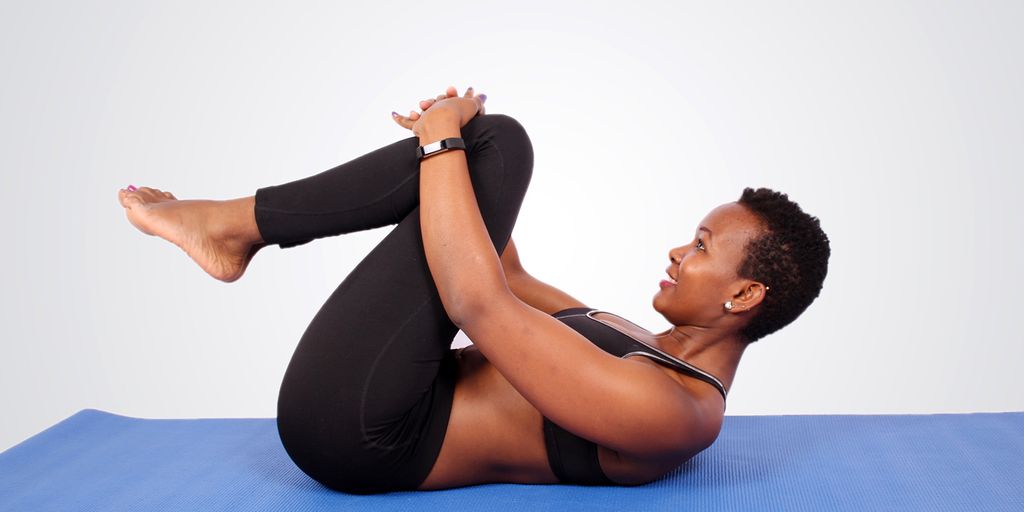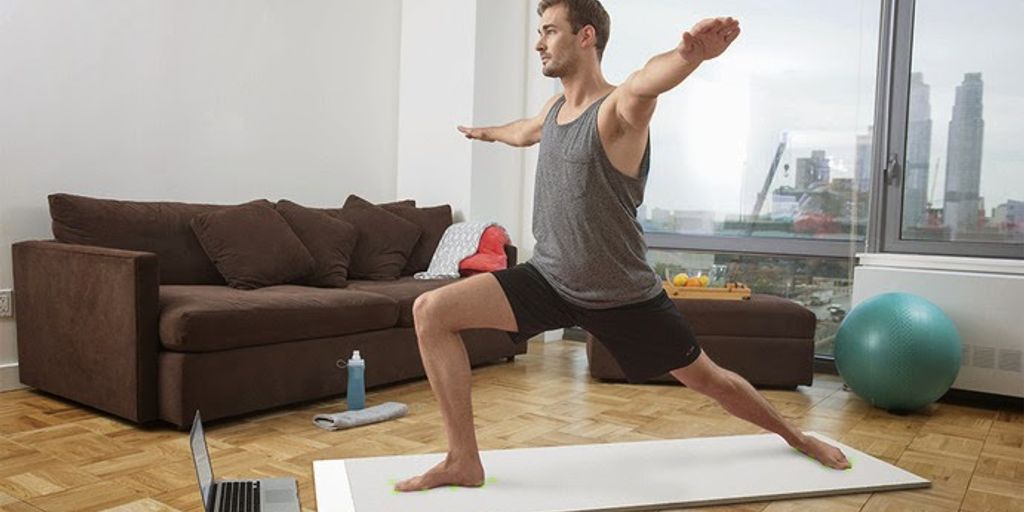
Prevent Slipping on Your Yoga Mat: Tips and Tricks for a Steady Practice
Maintaining stability on your yoga mat is essential for a safe and effective practice. Slipping can disrupt your flow, cause injuries, and make your yoga sessions less enjoyable. This article provides valuable tips and tricks to help you prevent slipping on your yoga mat, ensuring a steady and focused practice.
Key Takeaways
- Understanding the causes of slipping, such as mat material, sweat, and improper cleaning, is crucial for prevention.
- Choosing the right yoga mat with appropriate material, thickness, and grip features can significantly reduce slipping.
- Regular and deep cleaning of your yoga mat using natural solutions helps maintain its non-slip properties.
- Using yoga accessories like towels, grip socks, and non-slip sprays can enhance your grip during practice.
- Incorporating proper yoga techniques and creating an ideal practice environment can further minimize the risk of slipping.
Understanding the Causes of Slipping on Your Yoga Mat
Material and Texture of the Mat
The material and texture of your yoga mat play a crucial role in preventing slipping. Mats made from PVC or TPE often provide better grip compared to those made from natural rubber or cotton. Textured surfaces can enhance grip, but they may also wear out faster with regular use.
Sweat and Moisture Issues
Sweat and moisture are common culprits behind a slippery yoga mat. When you sweat, the moisture can create a slick surface, making it difficult to maintain balance. Using a towel to absorb sweat can help mitigate this issue.
Improper Cleaning and Maintenance
Improper cleaning and maintenance can lead to a buildup of oils and dirt, which can make your mat slippery. Regular cleaning is essential to maintain the mat's grip. Avoid using harsh chemicals that can degrade the mat's material over time.
Understanding the causes of slipping on your yoga mat is the first step towards a safer and more effective practice. By addressing these issues, you can enhance your stability and focus during your sessions.
Choosing the Right Yoga Mat to Prevent Slipping
Material Considerations
When selecting a yoga mat, the material is crucial. Natural rubber mats offer excellent grip and are eco-friendly. PVC mats, while durable, can become slippery when wet. Consider mats made from TPE for a balance of grip and comfort.
Thickness and Density
The thickness and density of your yoga mat can significantly impact your practice. A thicker mat provides more cushioning but may reduce stability. Conversely, a thinner mat offers better stability but less comfort. Aim for a mat that balances both aspects to prevent slipping on your yoga mat.
Grip and Texture Features
Look for mats with a textured surface to enhance grip. Textured mats can help you maintain poses without slipping, especially during intense sessions. Some mats feature a dual-layer design with different textures on each side, providing versatility for various types of yoga practices.
Choosing the right mat material and thickness is essential for a steady practice. Prioritize grip and comfort to ensure a safe and effective yoga session.
Effective Cleaning Techniques for a Non-Slip Yoga Mat
Regular Cleaning Routine
Maintaining a regular cleaning routine is essential for keeping your yoga mat non-slip. Wipe down your mat after every practice with a damp cloth to remove sweat and dirt. This simple step can prevent the buildup of grime that causes slipping.
Deep Cleaning Methods
For a more thorough clean, consider deep cleaning your mat once a month. Submerge your mat in a bathtub filled with warm water and a few drops of mild detergent. Gently scrub with a soft brush, then rinse thoroughly and hang to dry. This method helps to remove stubborn dirt and oils that regular cleaning might miss.
Using Natural Cleaning Solutions
If you prefer natural cleaning solutions, mix equal parts water and white vinegar in a spray bottle. Add a few drops of essential oil for a pleasant scent. Spray your mat and wipe it down with a clean cloth. This solution is effective in disinfecting and maintaining the grip of your mat without harsh chemicals.
Regular and deep cleaning not only prolongs the life of your yoga mat but also ensures a safe and steady practice environment.
Using Yoga Accessories to Enhance Grip
Yoga Towels and Rugs
Yoga towels and rugs are excellent accessories to enhance grip on your mat. They absorb sweat effectively, preventing moisture from causing slips. Simply place a towel over your mat, and it will provide an extra layer of traction.
Grip Socks and Gloves
Grip socks and gloves are designed with special non-slip surfaces that help maintain stability during your practice. These accessories are particularly useful for poses that require a strong grip, such as downward dog or plank.
Non-Slip Sprays and Solutions
Non-slip sprays and solutions can be applied directly to your yoga mat to improve its grip. These products create a tacky surface that helps keep your hands and feet in place. Ensure you follow the manufacturer's instructions for the best results.
Incorporating these accessories into your practice can significantly reduce the risk of slipping, allowing you to focus more on your poses and less on maintaining your balance.
Proper Yoga Techniques to Minimize Slipping
Correct Hand and Foot Placement
Ensuring correct hand and foot placement is crucial for maintaining stability during your yoga practice. Widening your stance can provide a more solid foundation, reducing the likelihood of slipping. Additionally, spreading your fingers and pressing firmly into the mat can enhance grip.
Engaging Core Muscles
Engaging your core muscles not only helps in maintaining balance but also in distributing weight evenly across your body. This can significantly reduce the chances of slipping, especially in poses that require a strong center of gravity.
Adjusting Poses for Better Stability
Sometimes, minor adjustments in your poses can make a big difference. Lowering your center of gravity and using props can help you maintain better stability. Practicing on a non-slip surface can also contribute to a steadier practice.
Maintaining focus in your yoga practice is essential for minimizing slips and falls. Avoiding excessive sweat and ensuring your mat is clean can further enhance your grip.
Creating the Ideal Practice Environment
To ensure a steady and safe yoga practice, it's crucial to create an ideal environment. This involves controlling the temperature and humidity, choosing the right surface, and ensuring adequate space for your movements.
Temperature and Humidity Control
Maintaining the right temperature and humidity levels can significantly impact your grip on the yoga mat. High humidity can make the mat slippery, while extremely low humidity can cause dryness and discomfort. Aim for a balanced environment to enhance your practice.
Choosing the Right Surface
The surface you practice on plays a vital role in preventing slipping. Opt for a surface that provides enough traction and stability. Avoid practicing on overly smooth or slippery floors, as they can compromise your balance and safety.
Ensuring Adequate Space
Having enough space around you is essential for a safe yoga practice. Make sure you have enough room to move freely without any obstructions. This not only helps in maintaining balance but also prevents any accidental injuries.
Creating the right environment for your yoga practice is as important as choosing the right mat. Pay attention to these factors to enhance your overall experience and safety.
Incorporating Anti-Slip Products into Your Practice
Anti-Slip Yoga Mat Sprays
Anti-slip yoga mat sprays are a convenient solution to enhance the grip of your yoga mat. These sprays create a tacky surface that helps you find your balance during poses. Simply spray a light mist over your mat before practice and let it dry for a few minutes.
Using Rosin Bags
Rosin bags, commonly used by athletes, can also be beneficial for yogis. The rosin powder helps absorb moisture and provides a better grip. Gently pat the rosin bag on your hands and feet before starting your session to improve stability and prevent slipping.
DIY Anti-Slip Solutions
For those who prefer a more natural approach, DIY anti-slip solutions can be effective. A mixture of water and a few drops of essential oils can be sprayed on your mat to enhance grip. Additionally, a light sprinkle of sea salt can add texture to the mat's surface, making it less slippery.
Incorporating these anti-slip products into your practice can lead to improved stability, enhanced grip, and overall safety during your yoga sessions. Remember to consider the material, thickness, texture, and size when choosing a mat to ensure maximum comfort and durability.
Incorporating anti-slip products into your practice can significantly enhance your yoga experience by providing better stability and safety. Explore our range of non-slip mats and accessories designed to keep you grounded during your sessions. Visit our website to discover the perfect products for your needs and enjoy free shipping on all orders!
Conclusion
Maintaining a steady and safe yoga practice is essential for reaping the full benefits of this ancient discipline. By implementing the tips and tricks outlined in this article, such as choosing the right mat, using yoga towels, and maintaining proper hygiene, you can significantly reduce the risk of slipping and enhance your overall practice. Remember, consistency and mindfulness are key. Stay attentive to your body's needs and make adjustments as necessary to ensure a secure and fulfilling yoga experience.
Frequently Asked Questions
Why do I keep slipping on my yoga mat?
Slipping on a yoga mat can be caused by several factors including the material and texture of the mat, sweat and moisture, and improper cleaning and maintenance. Choosing the right mat and keeping it clean can help reduce slipping.
What type of yoga mat is best for preventing slipping?
Look for mats made from materials with good grip, such as natural rubber or polyurethane. Mats with a textured surface can also help prevent slipping. Consider the thickness and density of the mat as well.
How often should I clean my yoga mat to prevent slipping?
It's recommended to clean your yoga mat after each use with a mild cleaning solution. For a deeper clean, you can wash it more thoroughly once a month. Regular cleaning helps maintain the grip and longevity of the mat.
Can I use a towel on my yoga mat to prevent slipping?
Yes, using a yoga towel or rug can provide additional grip, especially if you sweat a lot during practice. The towel absorbs moisture and provides a more stable surface.
Are there any accessories that can help with grip during yoga practice?
Yes, accessories like grip socks and gloves, non-slip sprays, and rosin bags can enhance your grip and stability during yoga practice. These can be especially helpful for hot yoga or intense sessions.
What are some natural cleaning solutions for my yoga mat?
You can use a mixture of water and vinegar or water and mild dish soap as a natural cleaning solution for your yoga mat. Essential oils like tea tree oil can also be added for their antibacterial properties.


